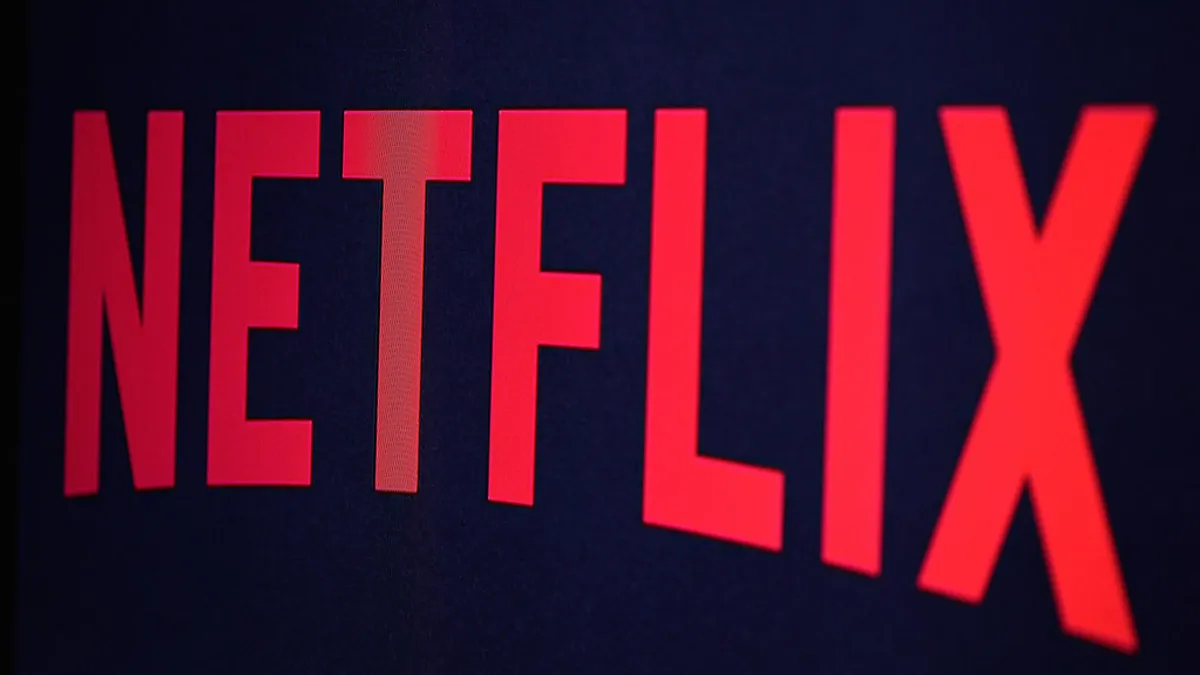Netflix’s ad-supported tier launches later today (Nov. 3) in the U.S., heralding a new chapter — and significant test — for the streaming market leader. The offering enters a crowded field, competing not only with category rivals like HBO Max and Disney+, but also social apps like YouTube, Twitch and TikTok which are grabbing the attention of young viewers.
The rollout additionally comes as a down economy pinches advertising and consumer budgets heading into the key holiday season. Roku, an important figure in the connected TV (CTV) space, just saw its stock drop sharply on an earnings report that forecasted ad spending will “degrade” in the fourth quarter due to macroeconomic headwinds.
As marketers come under pressure to invest in channels that drive tangible results, video inventory that is untested and reportedly expensive compared to industry standards represents a riskier bet, giving Netflix a tall order to fill. Netflix will start applying Nielsen’s digital ratings system sometime next year and is also relying on partnerships with DoubleVerify and Integral Ad Science to track the success of campaigns.
“Advertisers will be paying a high premium to advertise on Netflix — with uncertain results. The platform reportedly won’t have third-party measurement until at least early 2023,” said Kevin Krim, president and CEO of EDO, over email. “The stakes are high. Netflix knows that to create a sustainable ad-supported tier, those ads have to perform based on the outcomes marketers need to generate.”
Similarly, there’s the question of whether consumers will bite. Streaming subscriptions might be culled as food and fuel take priority. Netflix’s bargaining chip is that its ad-supported option is comparatively affordable: $6.99 per month, which is less than half of its standard package and a dollar cheaper than a Disney+ tier with commercials debuting next month. Netflix expects the new ad-supported platform will reach about 40 million unique viewers globally by the third quarter of 2023, according to internal documents reviewed by the Wall Street Journal.
“As American families juggle inflation and rising gas costs, ad-supported tiers give them more affordable access to highly popular and premium TV content. This will be huge as the proliferation of streaming — including expansion of current platforms and newly introduced streaming services from major networks — continues,” Krim said. “But will Netflix bring in new price-sensitive subscribers or will current subscribers trade down? That’s the only real risk.”
Gauging interest
Netflix has gotten its advertising ambitions off the ground quickly since announcing plans for an ad-supported tier in April. The firm roped in Microsoft as its global ad tech and sales partner in July, and later poached key executives from Snap that have strong ties to brands and agencies. The idea, long term, is to create a more innovative model for premium and CTV ads, Netflix executives have said. That goal could be a long way off from realization.
“Netflix had first mover advantage in the subscription streaming space and now they have the late mover advantage in the ad-supported world as they learn and apply the lessons of others,” said David Cohen, CEO of the Interactive Advertising Bureau, over email.
“Netflix is just getting started and needs to start with the basics and fundamentals that are most widely accepted by audiences and marketers,” Cohen said, adding that he was confident in the prospects of the business given the streamer’s legacy of innovation.
For now, Netflix’s ad infrastructure is indeed bare bones: pre- and mid-roll video ads running either 15 or 30 seconds. The company is also initially keeping its ad load light to no more than four or five minutes per hour to address volume and frequency problems that have long dogged the CTV industry. That said, some brands are still jumping at the opportunity and might even appreciate the focus on proven formats over experimental ones.
“Marketers are not monolithic in their thinking on topics like this. There are absolutely some that want to be first in and see what they learn and others that will take a wait-and-see approach,” said Matt Spiegel, executive vice president of the media and entertainment vertical at TransUnion, over email. “[The] practical reality is that most marketers are still very comfortable with [15- and 30-second ads] and prioritize the access to new consumers in a premium environment over new creative executions.”
In a virtual presentation around the ad-supported tier last month, Netflix showcased ads from NYX Professional Makeup and L’Oreal Paris running around “Emily in Paris,” a series aligned with those brands’ glossy positioning. AB InBev is also confirmed to be running Netflix’s first beer ads, according to Ad Age, a move that comes the brewing giant adjusts its approach to traditional media.
“We know consumers have more and more choices when it comes to how they spend their time online, so it’s critical that we continue to evolve our playbook as we look to further integrate our brands into culture,” said Spencer Gordon, group vice president of Connections and DraftLine at Anheuser-Busch, in an emailed statement to Marketing Dive regarding the Netflix news.
Sara Karlovitch contributed to this story.























